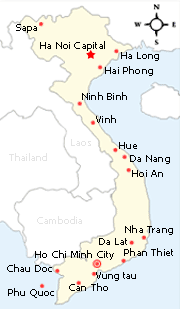|
Farmers need to be trained as tour guides Craft villages produce one of the strategic tourist products of many countries in the world. Apart from socio-economic benefits, craft villages also help preserve the cultural characteristics of each locality. However, the development of craft villages not only needs tourist investment but also locals’ awareness of preserving traditions.
Hanoi has about 256 traditional craft villages. About 25% of them are over 100 years old and filled with age-old cultural and historical features. They are considered abundant tourism resources for tourism. Except for the two renowned names of Bat Trang Pottery Village and Van Phuc Silk Village, most of these villages, such as Chuong My Bamboo Weaving Village, Quat Dong Brocade Village, Chuong Hat Village and Ha Thai Lacquer Village, seem to be neglected. The global Some people, despite the ups and downs of life and the stiff competition with modern manufacturing technologies, still lead their life with their compassion for crafts in an effort to preserve the traditions handed down from generation to generation. However, farmers need to be trained professionally in tourism. They People often remember Bat Trang and Van Phuc as local farmers are clever in doing business. When sales decline, they allow tourists to make ceramic products by themselves or offer buffalo carts for tourists to stroll around the craft village to discover local attractions. Meanwhile, artisans in Van Phuc are always willing to perform how to weave for tourists. To them, selling products is important but allowing tourists to know their products is more important. Today, Vietnam’s craft villages face many uncertainties in organizing ability, financial resources, equipment, marketing skills, technology and infrastructure. Product quality is not the same among the villages and some products are not suitable with contemporary styles. It is hard to make these traditions harmonize with modern styles. “The craft village is a specific characteristic of Vietnam’s tourism in collaboration with traditional festivals and regional customs. Therefore, farmers need to be trained into tour guides who can promote typical characteristic of their own country,” said Pham Trung Luong, deputy director of the Vietnam Institute for Tourism Development Research. VietNamNet/SGT
Other news for Monday 11 January, 2010
View all news for Monday 11 January, 2010 on one page News for Wednesday 06 January, 2010
View all news for Wednesday 06 January, 2010 on one page Recent News
|










